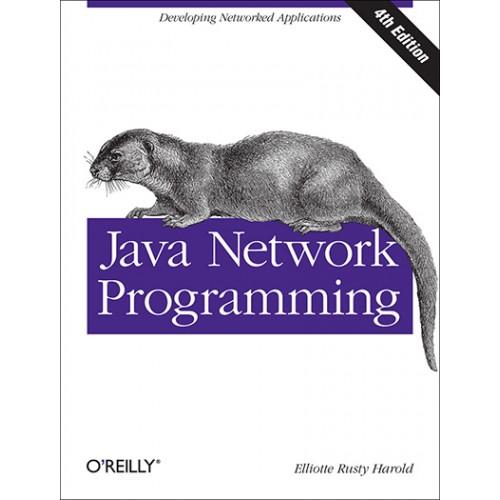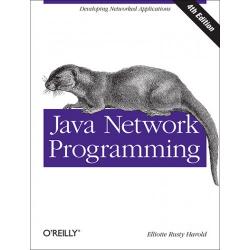Amazon.comDoes this sound familiar? You know Java well enough to write standalone applets and applications, even multithreaded ones, but you know next to nothing about the language's networking capabilities. And guess what--your next job is to write a network-centric Java program. Java Network Programming serves as an excellent introduction to network communications generally and in Java. The book opens with information on network architectures and protocols and the security restrictions placed onapplets. Quickly, the author gets to the meat of networked Java with a complete elucidation of the InetAddress class, the URL-related classes, applet-specific networking methods, and sockets. The author also covers packets, Remote Method Invocation (RMI), and servlets.
The one serious shortcoming of this book is that it does not include a companion disk, which is the case with most O'Reilly books. You'll have to visit the publisher's FTP site for the code if you dislike typing the examples manually. On the whole, though, this is an excellent tutorial that will guide you through the world of Java networking as smoothly as possible.Book DescriptionThe new third edition of this highly regarded introduction to Java networking programming has been thoroughly revised to cover all of the 100+ significant updates to Java Developers Kit (JDK) 1.5. It is a clear, complete introduction to developing network programs (both applets and applications) using Java, covering everything from networking fundamentals to remote method invocation (RMI). Java Network Programming, 3rd Edition includes chapters on TCP and UDP sockets, multicasting protocol and content handlers, servlets, multithreaded network programming, I/O, HTML parsing and display, the Java Mail API, and the Java Secure Sockets Extension. There's also significant information on the New I/O API that was developed in large part because of the needs of network programmers. This invaluable book is a complete, single source guide to writing sophisticated network applications. Packed with useful examples, it is the essential resource for any serious Java developer.
It is prohibited to indicate and request contact and payment information. Such messages will be deleted by the auction administrator.
To purchase a lot, use the “Buy/Place a Bid” button.



